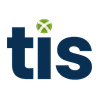Deutsche Bank’s Christoph Hofmann, Head of Corporate & Payment Solutions, explains the move to ISO 20022 “as a major overhaul of the global payments infrastructure and one of the hot topics in the payments industry today…”* At first glance it may seem that the consequences of these changes are limited to the interbank market. However, Jörg Wiemer, CSO and Co-Founder of TIS, explains what ISO 20022 means for corporates globally. Jörg emphasizes that enterprises will need to act soon to reap the rewards or avoid issues! “These changes will have a direct effect on the corporate community. Clearing systems, banks and of course SWIFT itself are changing from the FIN standard, which uses the MT message type, to the ISO format which uses XML.” Systems such as ERPs, TMSs, Payroll etc., will also, at some point, need to be able to send and receive the new format for both payments and account information.
[buzzsprout episode=’9753186′ player=’true’]
“The good news is that ISO 20022 provides significant benefits for enterprises. For example,” explains Jörg Wiemer, “companies can enjoy much richer data and structured formats end-to-end. This will allow more reference information supporting reconciliation and better STP rates.” However, it is not just corporates who will reap the rewards from this conversion, but also banks and regulators. This will be accomplished through, e.g., more effective filtering and monitoring for compliance risks, given the richer and more structured data. However, the shift to ISO 20022 is not ‘just another bank project’. Financial Institutions must convert from MT messaging – used since the late 1970s – to ISO XML. Wiemer says that “this is a significant move towards creating interoperability between local country formats and cross-border payments; however, to date, most banks are focused on their own ISO 20022 transition projects and not those of their corporate clients.”
Beginning November 2022, SWIFT will fully accept, support and translate, the ISO 20022 format from MT messages received by banks; however, it will not yet be mandatory. The official migration deadline for financial institutions is November 2025. On this date, all FIs must send and receive ISO XML messages. SWIFT has announced that between November 2022 and November 2025, there will be a coexistence period of both format types. Wiemer reminds us that financial institutions will at some point stop accepting and supporting legacy MT formats from their corporate clients. The timing is not clear and may differ from bank to bank! SWIFT will not require corporates to convert by November 2025, hoping to educate companies on the benefits and advantages of conversion.
Joerg Wiemer points out that the CGI-MP industry group, in close collaboration with some 50 member banks from all geographic regions – together with corporates, system providers such as ERPs and TMSs – is creating a new version of usage guidelines. The goal is to allow as little deviation as possible per country and payment type to avoid room for interpretation of the ISO 20022 standard. Banks and corporates and their systems’ providers will be affected as well. The conversion to ISO 20022 is not just an IT project; processes must also be reviewed, updated, and mapped!
We asked Jörg what enterprises can or should do to stay ahead of any potential showstoppers. He explained that one solution is to leverage appropriate conversion services or outsource the complexity of such a project to a competent vendor. “This type of migration can create significant issues for corporate entities in terms of resources and cost, as well as efficiency, especially regarding treasury and IT. One of TIS’s key USPs is to reduce complexity and enhance connectivity, making TIS well placed to help corporates. TIS can provide a triple win for clients by supporting them as well as their systems’ providers and banks to solve key enterprise payment optimization challenges.” The ISO 20022 XML conversion is a significant undertaking, in part, because there are over 100,000 unique payment types globally needing different data and data sequences to populate and create new formats. And one thing is clear, according to Wiemer, “all the banking and payment experts agree that now is the time for corporates to get started on their journey, their migration to ISO 20022!”



